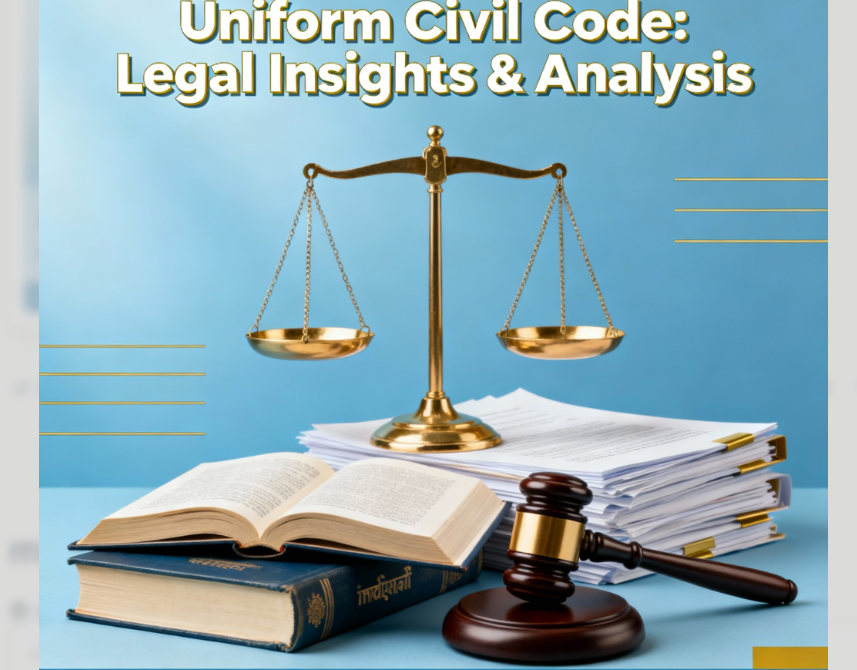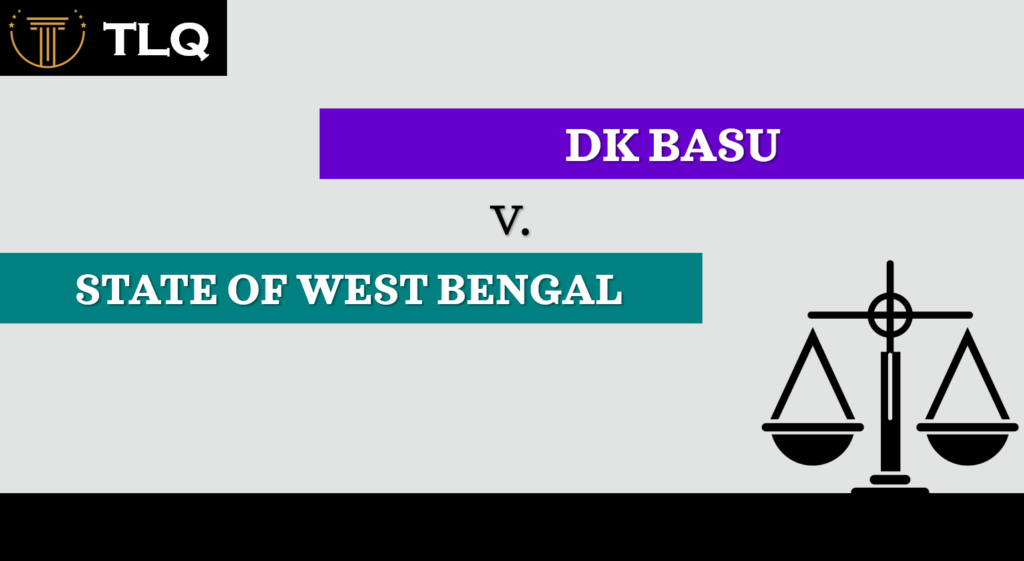Published On: October 30th 2025
Authored By: Meera Nair U
Government Law College, Thiruvananthapuram
Abstract
As India navigates the complexities of rapid industrial growth, its judiciary has emerged as a transformative force, reshaping the very contours of constitutional law to protect the environment. This article explores the landmark judicial journey that began with a creative interpretation of the “right to life” under Article 21, expanding its scope to include a fundamental right to a healthy environment. Through a series of pivotal judgments, the Supreme Court of India has not only enforced a constitutional duty for the state to protect its ecosystems but has also integrated key global principles—such as the Polluter Pays and Precautionary Principles—into domestic law. Yet, this paper also offers a critical analysis of the inherent tensions that persist, examining the judiciary’s aften-inconsistent approach when balancing the demands of development against the imperatives of ecological preservation. It highlights the profound legal innovation of the courts while underscoring the ongoing challenges in translating judicial pronouncements into on-the-ground environmental justice.
Introduction: A Methodological Approach
The evolution of environmental law in India is a story of a nation’s journey from post-colonial neglect to a proactive constitutional commitment, largely driven by judicial innovation. In the decades following independence, a formal legal framework for environmental protection was minimal.¹ Laws that did exist, such as the Indian Forest Act, 1865, were colonial relics primarily designed for revenue extraction rather than conservation.² This legal vacuum persisted for nearly three decades, forcing environmental concerns to be addressed, if at all, under the limited purview of the law of torts or a few sections of the Indian Penal Code and the Code of Criminal Procedure.³
This report’s analysis of Indian environmental jurisprudence is based on a methodology of identifying and analysing the foundational and landmark cases that have shaped this legal domain. The selected cases serve as milestones, illustrating key shifts in judicial philosophy, the articulation of new legal principles, and the judiciary’s increasing willingness to fill legislative and administrative gaps. By examining these pivotal judgments in chronological order, this paper traces the development of environmental rights from an unwritten constitutional concept to a robust, judicially-enforced legal reality.
The Legal Framework: Statutes, Principles, and Constitutional Foundations
A pivotal shift in India’s environmental approach was catalysed by the United Nations Conference on the Human Environment in Stockholm in 1972.⁴ This global event directly influenced India to enact its foundational environmental statutes. Parliament passed a series of crucial acts, including the Water (Prevention and Control of Pollution) Act, 1974, the Air (Prevention and Control of Pollution) Act, 1981, the Forest Conservation Act, 1980, and the overarching Environment (Protection) Act, 1986.⁵
Alongside this legislative action, India’s constitutional framework was also fundamentally altered. The Constitution (42nd Amendment) Act, 1976, inserted two crucial provisions that created a bedrock for environmental governance. Article 48A, a Directive Principle of State Policy (DPSP), directs the State to “protect and improve the environment and to safeguard the forests and wild life of the country.”⁶ Complementing this, Article 51A(g), a Fundamental Duty, places a corresponding responsibility on every citizen “to protect and improve the natural environment.”⁷ While these provisions laid the constitutional groundwork, the most powerful and transformative tool for environmental protection would emerge from a creative interpretation of Article 21.
Public Interest Litigation and Environmental Rights
The judiciary’s approach to environmental law marks a significant chapter in India’s legal history. Initially, the Supreme Court held a very narrow and restrictive view of fundamental rights, as seen in A.K. Gopalan v. State of Madras, where the right to life was interpreted as mere “liberty of the body” and freedom from detention.⁸ This limited perspective changed dramatically with the landmark judgment in Maneka Gandhi v. Union of India, which mandated that any state action interfering with a person’s life and personal liberty must be “right, just and fair” and not arbitrary.⁹ This liberal interpretation paved the way for a dynamic and expansive reading of Article 21, allowing it to encompass a wide array of rights essential for a dignified human existence.¹⁰
The procedural innovation that enabled the judiciary to apply this expanded right to environmental concerns was the use of Public Interest Litigation (PIL).¹¹ This tool allowed concerned citizens and social action groups to bring cases to court on behalf of the public, bypassing the traditional hurdle of locus standi, which required a person to have a direct, personal injury to file a lawsuit.¹² This was a critical enabler of judicial activism, as it legitimized the court’s role in addressing issues of public concern.
The genesis of the environmental right under Article 21 is often traced to the Rural Litigation and Entitlement Kendra v. State of U.P., popularly known as the Dehradun Quarrying Case.¹³ This case is widely regarded as the first of its kind in India, where the Supreme Court, through a PIL, intervened to order the closure of limestone quarries that were causing environmental degradation in the Mussoorie Hills.¹⁴ The court’s ruling was a clear signal of its willingness to prioritize ecological balance and public well-being over economic interests. The court’s order, while acknowledged to cause hardship, was deemed a “price that has to be paid for protecting and safeguarding the right of the people to live in a healthy environment.”¹⁵
This precedent was solidified in Subhash Kumar v. State of Bihar, where the court delivered a more explicit and unambiguous judgment.¹⁶ The Supreme Court held that the “right to life includes the right to the enjoyment of pollution-free water and air.”¹⁷ The court further stated that any activity that pollutes the environment, thereby impairing the quality of life, would be deemed a violation of Article 21.¹⁸ The decision affirmed that citizens could approach the court under Article 32 for the enforcement of this fundamental right. This chain of jurisprudence, initiated by a liberal reading of Article 21 and the subsequent application of this right in environmental matters, effectively forced the state and private actors to be more accountable.
Judicial Doctrines of Sustainable Development
Once the judiciary established a constitutional basis for environmental rights, it moved to create a robust framework for their enforcement by integrating internationally recognized principles of sustainable development into domestic law. These principles were not merely abstract ideas but were adopted as the operational arms of the constitutional right, providing clear guidelines for balancing developmental aspirations with ecological preservation.
- The Precautionary Principle: This principle, formally adopted in Vellore Citizens’ Welfare Forum v. Union of India, is a cornerstone of this framework.¹⁹ It posits that where there is a threat of serious or irreversible environmental damage, a lack of full scientific certainty should not be a reason for postponing cost-effective measures to prevent degradation.²⁰ The court placed a significant burden of proof on the developer, requiring them to demonstrate that their activity is environmentally benign.
- The Polluter Pays Principle: This principle holds that the polluter is liable for the costs of environmental damage and for restoring the damaged environment.²¹ Formally recognized in cases such as Indian Council for Enviro-Legal Action v. Union of India and reinforced in the Vellore Citizens case, this mechanism ensures both accountability and remediation, providing a crucial element of environmental justice.
- The Public Trust Doctrine: This was formally introduced into Indian law in the landmark case of M.C. Mehta v. Kamal Nath.²² The court, drawing on ancient Roman and English common law, held that certain natural resources like air, water, and forests are of such immense importance to the public that they cannot be subjected to private ownership. The judgment clarified that the government holds these resources in a “sacred trust” for the benefit and enjoyment of the general public and future generations.²³ This placed an “inviolable responsibility” on the state to protect these resources and prevented their exploitation for private commercial gain.
- The Principle of Absolute Liability: In the wake of national environmental crises, the Supreme Court in M.C. Mehta v. Union of India (Oleum Gas Leak Case) moved beyond the English rule of strict liability from Rylands v. Fletcher.²⁴ The court forged a new legal principle, holding that an enterprise engaged in a hazardous or inherently dangerous activity is absolutely liable for any harm caused, with no exceptions or defenses.²⁵ This epoch-making decision created a much stricter standard of accountability and a powerful new remedy for victims of industrial accidents.²⁶
These principles—precautionary, polluter pays, public trust, and absolute liability—are interconnected and collectively support the broader goal of sustainable development and the right to a healthy environment.
Climate Jurisprudence and Modern Trends
The judiciary’s role in environmental governance continues to evolve, addressing new and complex challenges, including the global threat of climate change. In a significant recent development, the Supreme Court, in M.K. Ranjitsinh v. Union of India, explicitly recognized a “right against the adverse effects of climate change.”²⁷ The court held that this right is intrinsically linked to the right to life and equality under Articles 21 and 14, while also deriving from the constitutional duties and directives in Articles 48A and 51A(g).²⁸ This judgment extends the right to a healthy environment to a global and long-term challenge, acknowledging the disproportionate impact of climate change on vulnerable and indigenous communities.²⁹
Furthermore, the judiciary has taken a firm stand against administrative attempts to circumvent environmental safeguards. In recent rulings such as Vanashakti v. Union of India and State of Maharashtra v. Union of India, the Supreme Court struck down government policies that allowed for ex-post facto or retrospective environmental clearances for development projects.³⁰ These judgments established a “zero-tolerance” approach, reinforcing the primacy of the Precautionary Principle and ensuring that compliance with environmental regulations is not optional.³¹ This sends a strong signal that economic development cannot come at the cost of constitutional and ecological integrity.
Gaps and Implementation: Speaking Green, Acting Grey
Despite these landmark pronouncements, a critical analysis of the judiciary’s environmental jurisprudence reveals persistent contradictions. While the court often “speaks green” with strong, pro-environment rhetoric, its judgments can sometimes “act grey,” leading to outcomes that facilitate developmental projects at the expense of conservation.³² A notable example is the Great Indian Bustard case, where the court, while recognizing the right against climate change, greenlit a major energy project in an endangered bird’s habitat.³³ This points to the judiciary’s inherent difficulty in fully committing to an eco-centric worldview when it clashes with the “development imperative” of the state.
There also remains a persistent gap between judicial pronouncements and their on-the-ground implementation. Landmark judgments often fail to produce the desired change due to a lack of political will, administrative deficiencies, and corporate non-compliance. This challenge is compounded by the fact that the court’s actions can sometimes be viewed as inconsistent, as seen in the much-criticized settlement of the Bhopal Gas Tragedy case, which was seen by some as a compromise of environmental justice for a quick resolution. The jurisprudence, while powerful, is not without its flaws.
This issue of implementation is not unique to India. In comparative jurisprudence, courts in other nations like Pakistan (Shehla Zia v. WAPDA) and the European Court of Human Rights have also linked environmental protection to fundamental rights, yet they too face similar challenges in translating legal principles into tangible policy outcomes.
Conclusion and Recommendations
In conclusion, the Supreme Court of India has played a pivotal and transformative role in shaping environmental jurisprudence, effectively filling a vacuum left by legislative and administrative inaction. The creative and expansive interpretation of the right to life under Article 21 has provided a constitutional bedrock for environmental rights, while the integration of principles like the Polluter Pays, Precautionary, and Public Trust doctrines has provided the necessary legal machinery for their enforcement. This journey demonstrates that a national crisis, coupled with a proactive judiciary, can act as a powerful catalyst for profound legal and social change.
To build on this foundation and address the existing challenges, the following recommendations are offered:
- Legislative Reform: Statutory laws should be updated to align with the principles established by the judiciary. This would reduce the reliance on judicial intervention and create a clearer, more predictable legal framework for environmental governance.
- Strengthening Enforcement: Administrative and regulatory bodies, such as the State Pollution Control Boards and the National Green Tribunal, must be empowered with greater resources, autonomy, and capacity to effectively enforce environmental laws on the ground.
- Promoting Public Participation: The role of public hearings and environmental assessments should be non-negotiable democratic rights, as this encourages greater public awareness and accountability.
- Judicial Consistency: The judiciary should strive for a more consistent and unflinching stance on environmental matters, ensuring that the developmental imperative does not systematically trump environmental protection.
Appendix I: Table of Cases
|
Case Name |
Citation |
Principle/Holding |
|
M.C. Mehta v. Union of India |
AIR 1987 SC 965 |
Principle of Absolute Liability |
|
Subhash Kumar v. State of Bihar |
1991 SCC (1) 598 |
Right to pollution-free water and air as part of Article 21 |
|
Vellore Citizens’ Welfare Forum v. Union of India |
1996 SCC (5) 647 |
Precautionary Principle; Polluter Pays Principle |
|
M.C. Mehta v. Kamal Nath |
1997 SCC (1) 388 |
Public Trust Doctrine |
|
M.K. Ranjitsinh v. Union of India |
2024 INSC 280 |
Right against adverse effects of climate change |
|
State of Maharashtra v. Union of India |
2025 INSC 271 |
Struck down retrospective environmental clearances |
|
Vanashakti v. Union of India |
2025 INSC 718 |
Struck down ex-post facto environmental clearances; zero-tolerance approach |
|
Rural Litigation and Entitlement Kendra v. State of U.P. |
AIR 1985 SC 652 |
First case to recognize the right to a healthy environment |
|
A.K. Gopalan v. The State of Madras |
AIR 1950 SC 27 |
Narrow interpretation of right to life |
|
Maneka Gandhi v. Union of India |
1978 SCC (1) 248 |
Expanded interpretation of right to life and liberty |
Appendix II: Table of Statutes and Constitutional Provisions
|
Statute/Provision |
Role in Environmental Jurisprudence |
|
The Constitution of India, 1950: |
|
|
Article 21 |
Guarantees the fundamental right to life, expansively interpreted by the judiciary to include the right to a clean and healthy environment. |
|
Article 48A |
A Directive Principle of State Policy that directs the State to protect and improve the environment. |
|
Article 51A(g) |
A Fundamental Duty that obligates every citizen to protect and improve the natural environment. |
|
Article 14 |
Guarantees equality before the law, used to ensure environmental burdens are not arbitrarily distributed. |
|
Article 32 |
Guarantees the right to constitutional remedies, used to file Public Interest Litigations. |
|
Environment (Protection) Act, 1986 |
Provides a comprehensive framework for environmental protection. |
|
The Water (Prevention and Control of Pollution) Act, 1974 |
Regulates water pollution. |
|
The Air (Prevention and Control of Pollution) Act, 1981 |
Aims to prevent, control, and reduce air pollution. |
|
The Forest Conservation Act, 1980 |
Focuses on conserving forests. |
|
The National Green Tribunal Act, 2010 |
Established the NGT for speedy and effective disposal of environmental cases. |
References
¹ See Indian Penal Code, 1860; Code of Criminal Procedure, 1973.
² See Indian Forest Act, 1865.
³ Id.
⁴ See UN Conference on the Human Environment, Stockholm (1972).
⁵ See The Water (Prevention and Control of Pollution) Act, 1974; The Air (Prevention and Control of Pollution) Act, 1981; The Forest Conservation Act, 1980; The Environment (Protection) Act, 1986.
⁶ The Constitution of India, 1950, art. 48A.
⁷ Id., art. 51A(g).
⁸ A.K. Gopalan v. State of Madras, AIR 1950 SC 27 (India).
⁹ Maneka Gandhi v. Union of India, (1978) 1 SCC 248 (India).
¹⁰ See Happy Kushwah, The Interconnectedness between Article 21 and Environmental Rights Jurisprudence, J. Legal Rsch. & Analysis, 2024.
¹¹ See S.L. Kanhaiya Singhal, Judicial Activism Vis-À-Vis Environmental Law, IIPA DIGEST (2022).
¹² Id.
¹³ Rural Litigation and Entitlement Kendra v. State of U.P., AIR 1985 SC 652 (India).
¹⁴ Id.
¹⁵ Id.
¹⁶ Subhash Kumar v. State of Bihar, 1991 SCC (1) 598 (India).
¹⁷ Id.
¹⁸ Id.
¹⁹ Vellore Citizens’ Welfare Forum v. Union of India, 1996 SCC (5) 647 (India).
²⁰ See L. Prakash, Principles of Sustainable Development in Indian Environmental Law, LAW NOTES (2024).
²¹ Id.
²² M.C. Mehta v. Kamal Nath, 1997 SCC (1) 388 (India).
²³ Id.
²⁴ See Rylands v. Fletcher, (1868) LR 3 HL 330.
²⁵ M.C. Mehta v. Union of India, AIR 1987 SC 965 (India).
²⁶ See M. C. Mehta v. Union of India, Wikipedia.
²⁷ M.K. Ranjitsinh v. Union of India, 2024 INSC 280 (India).
²⁸ Id.
²⁹ Id.
³⁰ Vanashakti v. Union of India, 2025 INSC 718 (India); State of Maharashtra v. Union of India, 2025 INSC 271 (India).
³¹ Id.
³² See Sushovan Patnaik, Giving the green signal: The Supreme Court and the environment, SCOB SERVER (2025).
³³ M.K. Ranjitsinh v. Union of India, 2024 INSC 280 (India).




